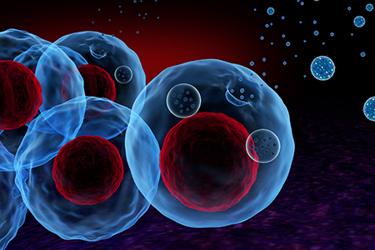Exosome Characterization with FFF-MALS-DLS
Christoph Johann, Ph.D., Wyatt Technology Corporation

Recent studies have demonstrated that exo-somes are a unique source of specific disease biomarkers because they originate from active cells, e.g. active tumor cells, whereas microvesicles come primarily from blebbing of dying cells and do not reflect the active disease status.
In order to use exosomes as a source of biomarkers, they need to be separated from soluble, high-abundance proteins and from microvesicles.
Field-flow fractionation (FFF) is highly effective for size-based separation in the range of a few nanometers to a micron. FFF is uniquely capable of isolating exosomes from other materials; it further separates the small EVs themselves into three different populations which have distinct properties and carry different biomarkers. This makes FFF the technique of choice for exosome isolation.
FFF coupled to online multi-angle and dynamic light scattering (FFF-MALS-DLS) is a versatile biophysical technique that provides detailed characterization of exosome physical properties such as size and charge, and in addition is useful for size-based isolation. Fractions can be collected for further off-line analysis such as imaging or genomic sequencing.
This white paper explains how the separation of exosomes is achieved and what information is obtained by coupling MALS and DLS online.
Get unlimited access to:
Enter your credentials below to log in. Not yet a member of Cell & Gene? Subscribe today.
